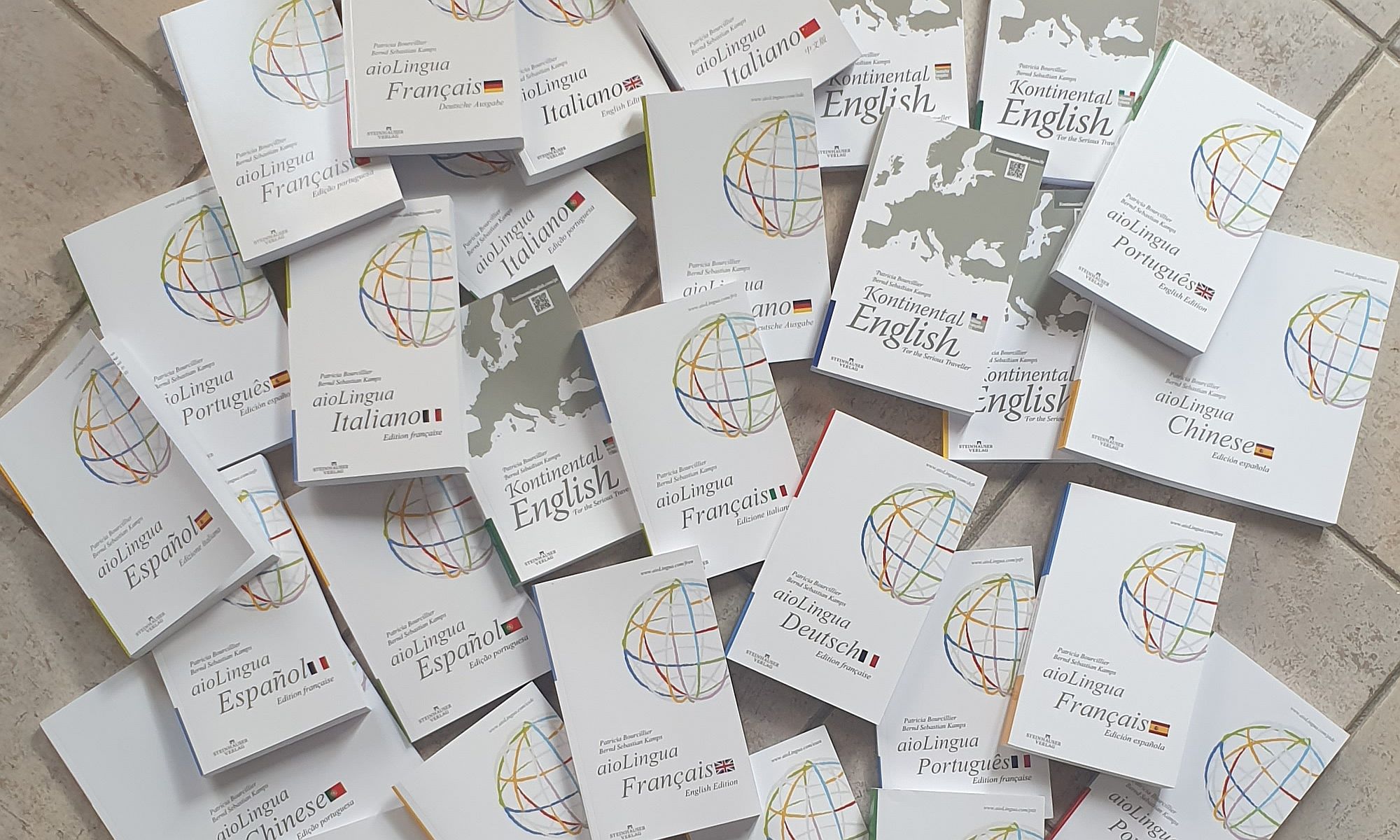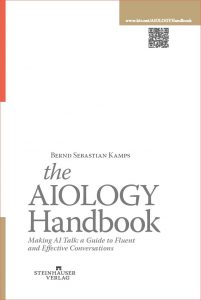“The more intelligent you are,
the more you will benefit from artificial intelligence.”
BSK, 2023
Second Edition
Download the free PDFs (around 400 pages):
- English Edition
- French Edition
- German Edition
- Greek Edition
- Indonesian Edition
- Japanese Edition
- Italian Edition
- Korean Edition
- Polish Edition
- Spanish Edition
- Turkish Edition
- Ukrainian Edition
- 中文版
AIOLOGY is the study of the behavior and performance of artificial intelligence, including its functioning, development and evolution, and its interaction with humans. The AIOLOGY Handbook (phonetic transcription eɪaɪˈɒlədʒi; pronounce ay-eye-OL-uh-jee) is your key to mastering these interactions, from basic understanding to advanced techniques. The book equips both AI novices and veterans with the skills to realize AI’s full potential. You will discover that the more skills and expertise you have, the better you can use AI.
Print Edition on Amazon
We are pleased to announce that the first 10 chapters of our widely utilized free PDF, ranging between 160 to 180 pages, is now accessible in a print version on Amazon. This tangible copy offers a superior and more traditional reading experience.
ENG | English: www.amazon.com/dp/3910263968
BRA | Português do Brasil: www.amazon.com/dp/3910263917
DEU | Deutsch: www.amazon.de/dp/3910263941
ESP | Español: www.amazon.es/dp/3910263933
FRA | Français: www.amazon.fr/dp/3910263925
ITA | Italiano: www.amazon.it/dp/391026395X
NLD | Nederlands: www.amazon.nl/dp/3910263909
The Highlights of the Manual
Uses of Conversational AI
Conversational AI is versatile and can be applied to a wide variety of use cases across multiple industries. Here are a few examples of how conversational AI is being used today: (Continue on page 24).
The Power of Specificity
When interacting with AI, the specificity of your query can make a significant difference in the quality and relevance of the response you receive. This principle applies to any form of communication, but it becomes critical when interacting with AI because it relies on the information you explicitly give it. (Continue on Page 41)
Context in AI Conversations – A Critical Component
While specificity is about giving AI detailed, clear, and precise information, context is about giving AI the background or situational information that shapes the meaning of an interaction. Context is critical in human conversations, and its importance carries over to AI interactions. (Continue on Page 44)
Crafting Powerful Statements
Creating powerful statements is as important as asking the right questions in user-AI interactions. Statements provide the context and specific instructions that guide the AI’s responses. (Continue on Page 60)
Altering Your Approach
The way you frame your interactions with the AI, including your tone, format, and focus, can significantly affect the AI’s responses. Let’s explore these aspects in more detail. (Continue on Page 62)
Commanding content generation
Commanding the AI to generate specific types of content is one of the most powerful capabilities of Direct Instruction. Whether you need help writing an email, composing a poem, generating a report, or even writing code, your ability to effectively command the AI can greatly simplify these tasks. (Continue on Page 65)
Character Simulation
Character simulation is another fascinating application of conversational AI. With direct instruction, you can instruct the AI to adopt the voice and style of a particular character, real or fictional. This capability can be incredibly useful in a variety of fields, such as creative writing, role-playing games, or even in education to make learning more interactive and engaging. (Continue on Page 67)
Directing AI Style
Directing AI to adopt a particular style can dramatically change the tone, delivery, and overall impression of a conversation or piece of content. This is a powerful tool that can be used in a wide range of applications, from creating formal business documents to generating lighthearted, humorous content and everything in between. (Continue on Page 69)
Case Studies
The following examples illustrate a real-world scenario in which you can direct the style or content of the AI to achieve a particular result. Remember, the more detailed and explicit your instructions are, the more likely the AI is to produce the desired result.
- Scientific Abstract: A researcher might instruct the AI, “Write a concise, formal abstract for a hypothetical research paper on the effects of climate change on polar bear populations.”
- Educational content: A teacher might ask the AI, “Write an engaging and easy-to-understand lesson on the water cycle for 5th grade students.”
- etc. etc, etc. (Continue on Page 71)
Seeding Context
Seeding context is a key method for providing AI with specific information at the beginning of a conversation to guide its understanding and responses in a context-consistent manner.
Advanced Tone and Style Techniques
These techniques shape the way AI communicates, allowing you to tailor your AI interactions to be more effective and fruitful.
Case Studies
This section features ten real-world examples that demonstrate how advanced techniques can significantly improve user-AI interactions.
AI in Content Creation
With significant advancements, conversational AI now assists with content creation tasks, from brainstorming ideas and writing drafts to scripting assistance. AI’s ability to produce contextually relevant, human-like language offers limitless possibilities for content creators. (Continue on Page 133)
AI in Education
Conversational AI is having a profound impact on education, reshaping teaching and learning methods. Its flexibility makes it a critical tool for enhancing the educational experience, personalizing learning, and facilitating effective educational dialogue.
Preface
Looking back to November 2022, we recall the groundbreaking launch of OpenAI’s ChatGPT, a conversational AI system capable of generating engaging dialogues on a wide range of topics with a variety of personalities in any language. Just four months later, in mid-March 2023, we saw the arrival of ChatGPT version 4.0, an upgrade that exceeded all expectations and set new benchmarks in natural language understanding and generation.
In the wake of these developments, other companies promptly began building their versions of conversational AI. They are also exploring broader applications of AI, including computer vision, speech recognition, machine learning, and robotics. The quest for innovation and excellence is well underway, and the long-term societal implications are unknown.
The year 2023 will stand as a watershed – the dividing line that forever separates a pre-AI era from a post-AI era. We’ve moved from a time when AI was a theoretical concept to a world where it is an integral part of our daily lives. Welcome to the dawn of the AI age, an era in which machines can not only understand and communicate, but also learn, create, and collaborate with humans on an unprecedented level. As we navigate this transformative journey, this handbook is your companion, guiding you through the basics of AI, its historical development, its current applications, and its future potential.
Welcome to a new time in a new world.
7 June 2023
Copyright: Steinhauser Verlag 2023

